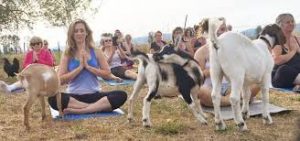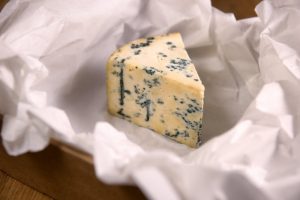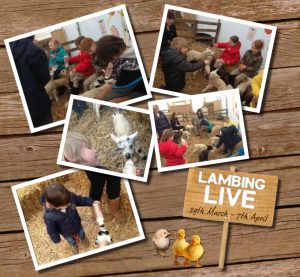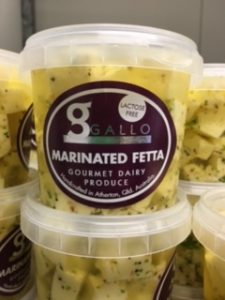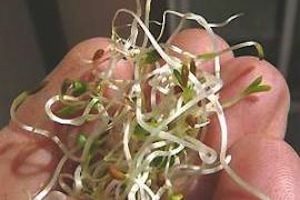In April 1986, three classes of kindergarten and pre-K schoolchildren visited a dairy farm near Sarnia, Ontario (that’s in Canada, although it feels like grungy U.S.).
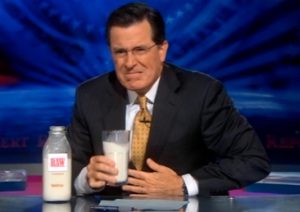 As recounted by David Waltner-Toews in his 1992 book, Food, Sex and Salmonella, “It was a typical Ontario farm, with 67 cows and calves, some chickens, some pigs, all well-cared for an clean, and seemed the perfect place to take a class of preschoolers. In April of 1986, 62 pre-school children and 12 supervising adults visited this farm. They played in the barn, petted the calves, pulled at the cows’ teats, and gathered a few eggs. For a break, they drank milk (right from the farmer’s tank!) and ate egg cookies (sliced hard-boiled eggs cleverly renamed to induce children to eat them). A good time was had by all.
As recounted by David Waltner-Toews in his 1992 book, Food, Sex and Salmonella, “It was a typical Ontario farm, with 67 cows and calves, some chickens, some pigs, all well-cared for an clean, and seemed the perfect place to take a class of preschoolers. In April of 1986, 62 pre-school children and 12 supervising adults visited this farm. They played in the barn, petted the calves, pulled at the cows’ teats, and gathered a few eggs. For a break, they drank milk (right from the farmer’s tank!) and ate egg cookies (sliced hard-boiled eggs cleverly renamed to induce children to eat them). A good time was had by all.
“Within the next two weeks, 42 children and four adults came down with abdominal cramps and diarrhea. Three of the children ended up in the hospital with hemolytic uremic syndrome. One of the children fell into a coma. All eventually recovered. The bacterium blamed for these misfortunes called verotoxin-producing E. coli, or VTEC.
“Public health investigators looked everywhere on the farm. Although they found only two calves carrying the organism, they decided that exposure to the unpasteurized milk was the most plausible explanation for what they saw. And yet the farm family, which drank that milk every day, was apparently healthy and not shedding VTEC.”
The public health version states that “after extensive sampling at the farm the only samples that were positive for E. coil O157:H7 were stool samples taken from two calves at the dairy farm. Agriculture Canada veterinarians collected the animal stool samples and also checked the herd for Brucellosis.
“To control the spread of the E. coil the three classes were closed at the school for about three, weeks. All the affected children and their families were restricted in their contact with the community until the affected family member(s) has three successive negative stool samples. These restrictions imposed by the Lambton Health Unit quickly controlled the spread of the E. coll. Thus by mid-June all families were negative for E, coli and by mid-July the three children with HUS had returned home from the hospital.”
This outbreak was noteworthy in that dairy farms in Ontario stopped serving raw milk to visiting school children.
As one of my many dairy farmer friends have told me, when the schools visit, we go to town and buy some (pasteurized) milk.
Thirty years later and the same nonsense is still being debated, in Tasmania (that’s in Australia).
Rhiana Whitson of ABC News reported earlier this month a Tasmanian farmer who demonstrates milking cows to children, giving them a “squirt” from the udder, has fallen foul of health authorities who have warned he is at risk of losing his business if he does not stop.
 Rowen Carter (left, exactly as shown) runs the Huon Valley Caravan Park, south of Hobart, which he said is “more than just a caravan park, we are a self-sufficient working farm that wants to teach people where real food comes from.”
Rowen Carter (left, exactly as shown) runs the Huon Valley Caravan Park, south of Hobart, which he said is “more than just a caravan park, we are a self-sufficient working farm that wants to teach people where real food comes from.”
Maybe Rowen should teach microbiology and Louis Pasteur.
Carter offers paying guests homemade Persian fetta made with raw milk, as well as a taste of raw cow’s milk straight from the udder’s teat.
“I squirt it in their mouth and then afterwards I appear with some plastic cups and show them the more couth way of tasting the fresh milk … everybody is amazed at how sweet and how nice it is,” Mr Carter said.
But his attempt to provide guests with an “old-fashioned farm experience” has landed him in trouble with the Tasmanian Dairy Industry Authority (TDIA).
Mr Carter denied selling raw milk and insisted his guests freely choose to sample it.
“It’s been taken away from us, the right to choose,” he said.
“I think people should be allowed to taste it … they don’t have to taste it, it’s their choice and it’s their choice to let their children have a taste.”
The sale of unpasteurised milk products for human consumption is illegal in Australia, however the use of raw milk in various products has continued with some arguing the risks have been overstated.
 Health authorities and experts have warned raw milk poses a health risk, especially to children. A boy died in 2014 after drinking raw milk, marketed as bath milk, labelled as being for “cosmetic use only”.
Health authorities and experts have warned raw milk poses a health risk, especially to children. A boy died in 2014 after drinking raw milk, marketed as bath milk, labelled as being for “cosmetic use only”.
Mr Carter said the tasting of the milk straight from the cow was a “highlight of the day” for guests.
“There is always the question ‘can we do the milk squirting again tomorrow?’
“Now we have to tell them because it is deemed we are selling the milk, squirting is now no longer.
“How can something that brings so much joy be so wrong?”
Search raw milk on barfblog.com and find out how wrong it can be.
In a facebook post, Carter wrote, “I can legally allow you to sit at my dining room table and offer you a can of coke and a cigarette but I am unable to offer you a glass of fresh (raw) milk and a scone with clotted cream according to Tasmanian Dairy Industry Authority acting chairman Mark Sayer.”
Raw milk and other weird parental dietary preferences disproportionally affect the kids.
It’s always the kids.
Mr. Carter, drink all the raw milk you like, I don’t care, I provide information.
But as parents, we generally don’t have a scotch and a smoke with 5-year-olds.
And stop with the squirting references, especially around kids: it’s just weird.
It’s still 1978 here in Australia; or 1803 in Tasmania.

